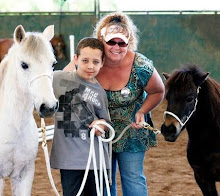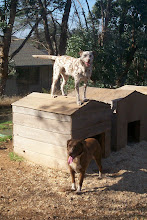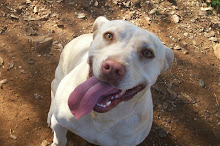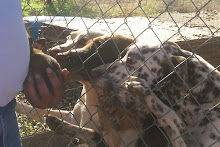Feel, Timing and Balance ***
Well, I likely will be shot for this review. But I can only speak my feelings on what I saw, or didn't see. This dvd is good, but not necessarily the end all be all of Dorrance, I believe. I do not have his books, nor seen any other video's of him or his work, and I will say that in the beginning of the dvd it clearly states that it is not an educational dvd on what to do, but rather to get the 'essence' of Tom Dorrance. Which is good, because as an educational dvd, you will not see a whole lot of technique to learn from. So as a Parelli student, if that is what you are looking for, look elsewhere. It is not to say there is nothing to be learned from it, because there certainly is. You DO get the essence of what he stands for. And there is some good horsemanship to be seen. Also, as a student, it is good to see the master your teacher learned from. You can see where your teachers ideas come from, and how the lessons may have been presented to your teacher, and then how your teacher has interpreted/filtered that information and how they are now passing it on to you. Especially knowing that there are WARS being created in our time, over which of the teachers has interpreted the masters knowledge the 'best'....ie: who is better? Pat, Buck, Dennis...whoever?......etc etc etc. For years you hear from them all, "I learned this from so and so" And yet, each of them has such vastly different styles, techniques, concepts, philosophy and values. So you are left to wonder...."If they all studied from the same person/s, how can they all be so different?" I certainly have my opinions on that, but this is not really the time or place for that, so maybe later I will share my thoughts on it.
Because it is so hard to judge sometimes what is useful or educational for one person and not really another, based on where they are at in thier journey.....what I did was to take notes for myself....on what I felt was important for me to remember about what I saw and heard. As a self assessed L4 Parelli Graduate, these are things that I observed....
On the subject of:
Disk 1
Feel, timing and balance. Tom explains "The broom" as the best metaphor for explaining it. If you tried to balance a broom on your thumb, bristles up, and you tried to make the broom stay still....the broom is going to fall. But IF, when the broom goes to the left, then your thumb follows to the left, and when the broom goes to the right, and your thumb follows to the right, you can keep it upright. The better and quicker your timing and feel, the shorter the distance your thumb will travel, and the better the balance of the broom will be. The slower your timing, if your too slow, or too big, the broom will fall. If you can get your feel and timing working really well, your movements may be nearly imperceptible. But you will always need a little life and a little movement, to stay in harmony with the broom, you need to keep it alive, or it will die and fall.
Same with getting in time with the feet, getting the message to the foot you want to talk to. If your timing is off, your request will be misunderstood, as you asked when the foot has the least chance of doing what you asked. Getting your your feel better, so your timing can be quicker, the better balance and life you and your horse will have, and that is the key to true unity. There is some good examples of this on both discs with a couple of horse evading crossing the tarp. To see the guy have such good timing with his reins, that the evasion is cut off quickly, and just like a bowling ball down a gutter, the horse had no other options but to cross the tarp.
The Spirit of the horse. Usually we do not see how hard the horse is trying for us. Either trying to do what he thinks we want, or trying to communicate something else to us. Either that he doesn't understand or is in pain or is afraid. Most times we see it as bad behavior.
There is a good segment on gaining confidence....chose those words as opposed to 'desensitizing' as it was just much softer, and quieter, than i am used to seeing, by way of 'desensitzing'. Instead of making a bunch of huge movements with the 'flag' (plastic bag on a stick) they just kept it steady, and moved it quietly with the horse until the horse could accept it.
But then there is a segment, with the same horse and a plastic bag, that I dont understand what the lesson was. The audio was not so great on this disk. They were creating a bit of unconfidence in the same horse. Likely I will need to watch it again. I may never understand it, as it was never stated what the purpose was for doing the technique. In either case, it is not something I would ever do, regardless of the purpose, so I am not that concerned with it. The rider was chasing the front end of the horse with the bag while in the saddle. Personally, I think I know what the lesson was, but honestly feel, if the rider had more knowlege of timing with the feet, or the horse was better prepared on the ground, it would not have been needed. But alas, I will just never know for sure.
On Learning: He states he cannot teach anything to anyone. That he can only help them figure things out. But that learning has to come from the inside of the human and the inside of the horse. People are looking for some big thing, but it is almost always some little thing that makes the big difference.
Disk 2
On learning at a clinic
If you think you are going to learn alot, you probably won't. But if you are coming to get exposure to alot of things and ideas, and then take them home and experiment and explore those ideas, that is where the learning happens.
Working on feel and timing and recognising the horses 'try'
"The horse was afraid to take a chance crossing the tarp because it thought it had been told not to, because the riders timing was off and he was hitting the horse in the mouth with the reins, when the horse would jump across the tarp."
One of the earliest things he tries to get across to a horse is to move his feet when asked. He tries not to ever let a horse get to a point where the horse will not move his feet when asked. In regards to a horse who would not cross the tarp online, with handler at the head and two wranglers behind with a but rope.
"Learning how to present ourselves to the horse in a way that is understandable to the horse:
When a person is thinking of it in that way (the above stated), they will be taking care of these things, within themselves, what is needed for the horse, and try to think of the horse first.....But those are just words until they are understood."
Trying to keep the feet going forward and straight: Alright....this is where I can say....."Thank GOD I am a parelli student" Because what Pat teaches to everyday people, about 'nose, neck, maybe feet' truley is a gift from him to us. Most of us, if not all of us, will not be in this desperate of a position, as the man in this segment. First let me say, I believe he had only had this horse for a week, and he was a talented skilled rider, and the 'brakes' on this horse were well ingrained. He would not cross the tarp. Neither while being ridden or on the ground. Tom worked with him undersaddle, and no go. Had the guy get off, and no go. Had another rider get on, and no go. Had two guys with a but rope behind the horse and no go. Finally he had the two guys each put a long,soft, thick cotton rope on each front ankle and led him by the foot, EVENTUALLY over the tarp. I can say, it was all done with feel, timing and balance....to keep the horse straight. There were times where I shuddered, watching his legs being pulled to the side, and him fall to his knees. Tom admits, he would NEVER go such an extreme straight away, and they did try everything they could think of first, even galloping the horse up to it. Back to being a Parelli student....had this horse been given an honest chance at learning to follow a feel and a suggestion, and being given a little bit of time for nose, neck maybe feet, he just might have not had to have been led by the feet like that. But what I will say about it, is that I have seen far worse displays of natural horsemanship than this. And while I would never want to have to resort to such measures, it was less forcefull than what I have seen from many big name guru's. Though I believe there are other ways, IF the horse is given the time. Which, often, is exactly the down side of weekend colt starts, Road to the horse type events, and tour stops. Time is a factor, and often the horses needs are lost in the intrest of making a change for the audience, not the horse, within the time allowed.
Learning to feel the whole horse:
He describes that because we cannot feel of the whole horse, only one or couple parts at a time, we are unable to keep him straight and forward, we cannot have the timing because we do not have the feel, so we will not have the balance.
*** Worth watching, but you won't die without it, as I feel the Parelli system emobies the essence of Tom Dorrance
click for his website
Savvy On
Michelle
Saturday, March 19, 2011
DVD Review:*** Tom Dorrance: Feel Timing & Balance
Labels:
DVD clinician Reviews,
Horsemanship Ideas
Subscribe to:
Post Comments (Atom)



















No comments:
Post a Comment
I know I am not perfect.....so be nice!